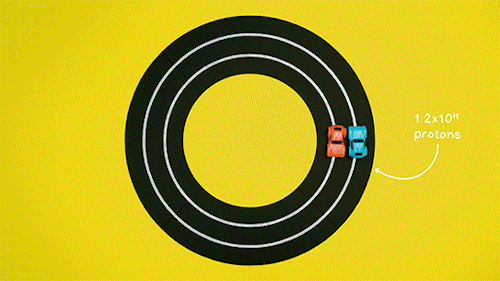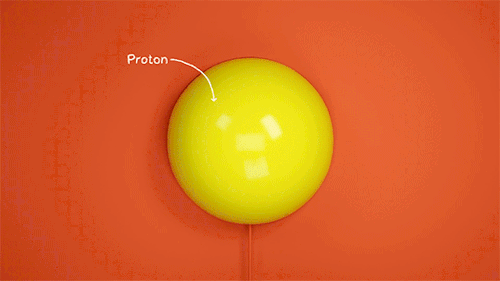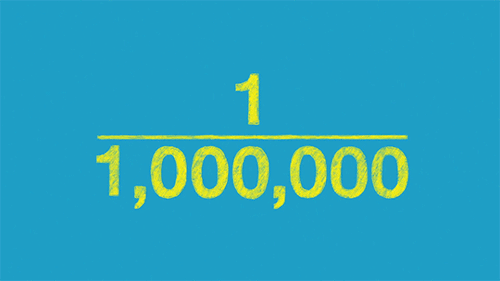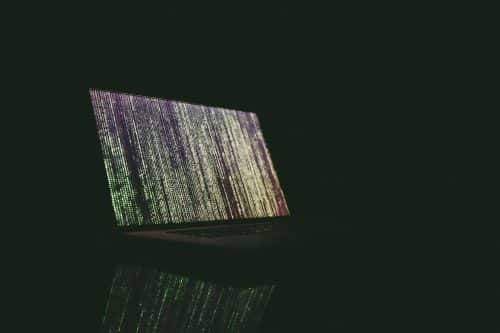85% of the matter in our universe is a mystery. We don’t know what it’s made of, which is why we call it dark matter. But we know it’s out there because we can observe its gravitational attraction on galaxies and other celestial objects.

We’ve yet to observe dark matter directly, but scientists theorize that we may actually be able to create it in the world’s most powerful particle collider. That’s the 27 kilometer-long Large Hadron Collider, or LHC, in Geneva, Switzerland.

So how would that work? In the LHC, two proton beams move in opposite directions and are accelerated to near light speed. At four collision points, the beams cross, and protons smash into each other.

Protons are made of much smaller components called quarks and gluons.

In most common collisions, the two protons pass through each other without any significant outcome.

However, in about one in a million collisions, two components hit each other so violently that most collision energy is set free, producing thousands of new particles.

Only in these collisions can very massive particles, like the theorized dark matter, be produced.

So it takes quadrillions of collisions combined with theoretical models even to start to look for dark matter. That’s what the LHC is currently doing. By generating a mountain of data, scientists at CERN are hoping to find more tiny bumps in graphs that will provide evidence for yet unknown particles, like dark matter. Or maybe what they’ll find won’t be dark matter, but something else that would reshape our understanding of how the universe works entirely.
And that’s part of the fun at this point. We have no idea what they’re going to find.














